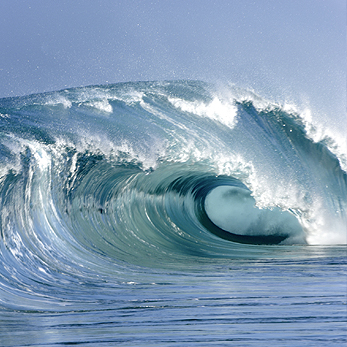Region I – Arctic Waters
Large parts of Region I are permanently ice-bound, but the Region is warmed by the North Atlantic Current and there is a large area of sea which is ice-free in summer. To the east, Atlantic water is diluted by mixing with the northward-flowing Norwegian Coastal Current, which carries fresher water flowing out from the Baltic Sea and the North Sea. In the Greenland Sea and Iceland Sea, winter cooling of the surface water and the release of water vapour to the atmosphere both increase the density of the surface water which then sinks to the bottom.
Melting of the seasonal sea ice in spring has an enormous impact on the ecology of the Region. Immediately after the ice melts there is a burst of primary productivity which is conveyed, often through short food chains, to the higher trophic levels that in turn support large stocks of fish, marine mammals and seabirds. The ecosystems are characterised by high natural variability due to a highly variable recruitment of fish stocks, strong biological interactions within simple food webs, and many species being near the edge of their distribution range.
Region I includes the transition between the Boreal and the true Arctic biogeographic zones, which in some areas is very sharp with a distinct polar front. The southern part of Region I supports some of the world’s most important fisheries (herring, capelin, cod) as well as substantial populations of marine mammals (whales and seals) and seabirds, notably auks and guillemots. The Arctic supports many endemic species and Region I also contains Europe’s entire population of polar bear, narwhal, walrus and beluga. Other notable features include cold seeps (areas of the ocean floor where the release of hydrogen sulphide, methane and other hydrocarbons from the seabed supports endemic species), as well as a large number of extensive cold-water coral reefs and numerous cold-water sponge aggregations. To the south, the Greenland-Scotland Ridge is a major biogeographical boundary for deep-sea benthos, acting as a barrier between warm-water and cold-water species.

